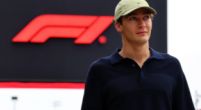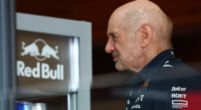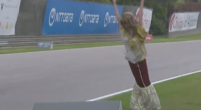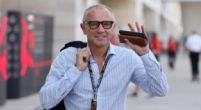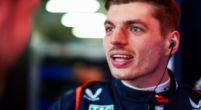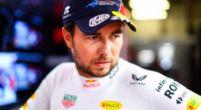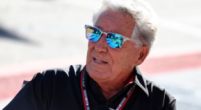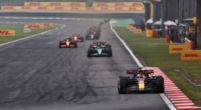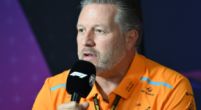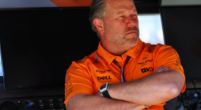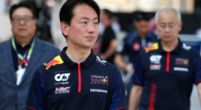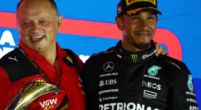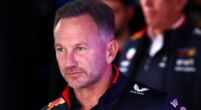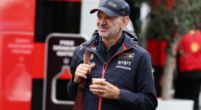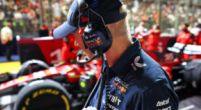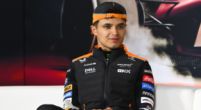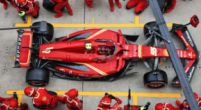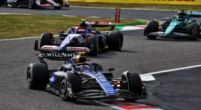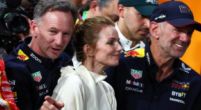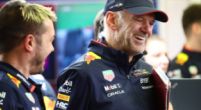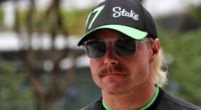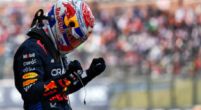Red Bull Content Pool
Interview

Waché explains why Red Bull are taking a risk with the aggressive RB20
As Chief Technical Director, Adrian Newey is often mentioned regarding Red Bull Racing's new car, but Pierre Waché has an ever-growing influence behind the scenes. In an exclusive interview with GPblog.com, Waché explains why Red Bull made the RB20 radically different and how it is done.
Pierre sits in the shadow of the Red Bull Racing hospitality on the first day of winter testing. After a morning of testing, much of the focus is on the RB20. After the car launch, the competitors were surprised when they saw the real RB20 in Bahrain. Waché is clearly delighted with the new car he and his team have brought to the track.
People might think, after last season 'why change the RB19 at all. Why did you change it?
Pierre Waché: "Because if you don't change, you lose. You have to progress. You have to improve. The performance is not fixed. You have to make sure that you improve the car more than the others. Because you are here to win. You are here to beat them because it's a competition. And the only way we found to make a decent step enough was to change the car."
And why are the adjustments so aggressive? I believe you called it that yourself?
PW: "It's quite an aggressive evolution. But it's the same philosophy as before. You try to go to the extreme and to go even further. When there are stabilised rules, it's the only time when you can do that because the rest is fixed. Then, if you have stabilised rules for two more years, and if you don't take the risk now to learn for the future, for 2025 also, somebody else will catch you at one point. Then you have to take the risk. And after you try to extract the performance of it."
And how do you do that? How do you keep motivating people to keep getting more out of it?
PW: "I think they are motivated... All the guys in the team are pushing more. I'm maybe the more conservative person in the team. They are very aggressive and very creative in this team. They love new stuff. It's why we are here. They love to see what they've done, what they think works."
And what is your role in the whole process of designing and building a new car?
PW: "First of all, to make sure that we achieve the priority. Decide the compromise we are doing because it's only compromise in this business. When you do one thing, you lose something else. But normally, put in place a full system to make sure that the compromise we are doing is the correct one."
And what is the compromise you made for this year?
PW: "A compromise in terms of suspension. What type of suspension you are taking. In terms of cooling. It's obvious. The risk we are taking on cooling. And what is the gain on aero you can have. You will have a compromise on weight. I think it's all the aspects of the performance and the risk of reliability when you change something massively."
What were the goals for this year's car?
PW: "The gain is to gain overall car performance without compromising the reliability of the car."
And what were the key components for that?
PW: "Clearly, what we were focused on is the low speed [corner] performance."
Last year, the team struggled with circuits where there were a lot of bumps. Those had a big impact on the car's performance. Can you change that for this year without making too big a compromise?
PW: "I hope we improve it. Maybe not enough. I don't know if we can improve without changing...The problem is that you lose some aero performance if you want a better ride. That is a balance. You have to take it into account and try to fix it. You don't want to lose more in terms of the car's overall performance by trying to fix this problem. And it's what we are trying to do. It's a risk."
What are the biggest risks you have taken with the RB20?
PW: "The cooling is quite a big risk. And it's a big change. I think we changed all the suspension. It's the same type of concept, but we push even more. I think it's a risk when you do a new chassis and the reduction of the car's weight. That is also a risk. The cooling, suspension behaviour and aero behaviour is a risk for sure. It could be more bouncing. We are looking at that at the moment. And after we balance that with the weight."
And why is that cooling so important to you guys?
PW: "Because it's pushing our philosophy of aero concept even more."
By becoming even narrower?
PW: "Yes, based on what flow we want. We try to make the entrance (of the sidepod) as small as possible in this area. I will not explain what we want on your phone. But you know, the principle is there."
We are currently in the third year of these regulations, and the development curve will become less and less steep as a result. Where are Red Bull in that curve? Are you guys still making the same strides as last year or the year before, or is it slowing down?
PW: "It's difficult, but I think we still have the capacity to make some steps, and everybody will do that. It's difficult to say where it will be stopped. At each development, at one point, you have a plateau to achieve. The problem depends not only on the regulations but also on the concept you choose. Then you have to change the concept to change the plateau."
And how much room is left in your concept?
PW: "I don't know. Fundamentally, if I do a very good job, I never develop the car. I do mark one. I don't do mark ten. It's just you only know what you know. That is very difficult to anticipate. Sorry to answer that. If we did a very good job, we would never develop the car. But we don't. And also, you pick up what the others have done, and you say, 'Ah I test that, I change my stuff' and after it will give you another idea. It's like a Darwin effect. It's not predetermined what you have. You find new stuff when you work around it."





